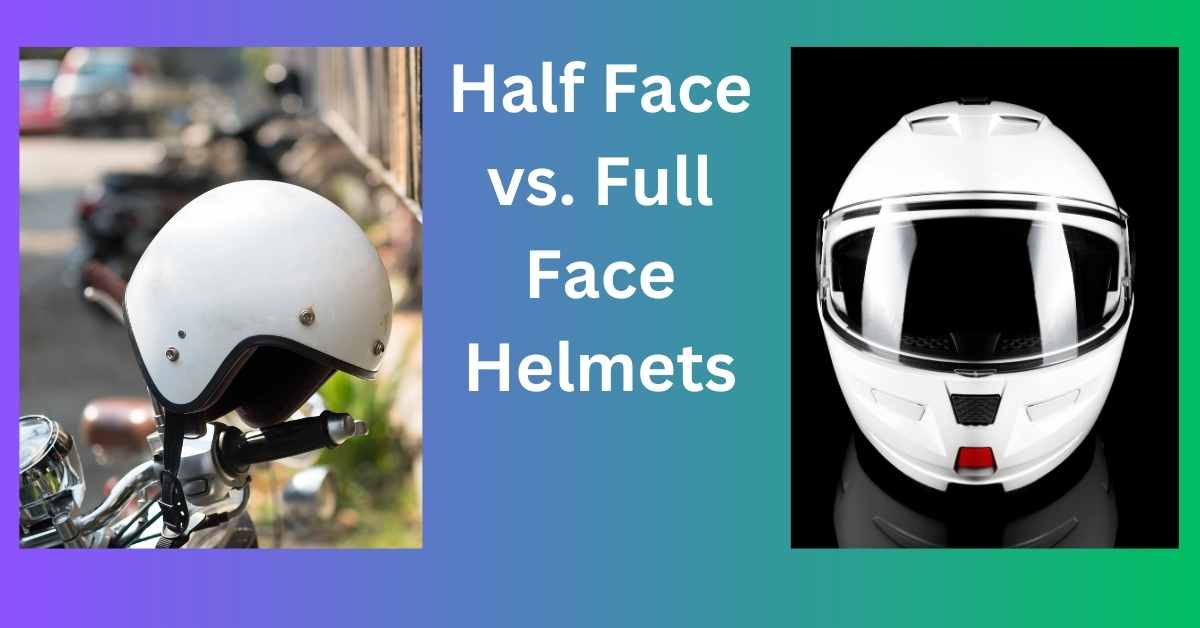When choosing a motorcycle helmet, one of the most important decisions you’ll make is whether to go with a half face or full face helmet. Both types of helmets have their own advantages and disadvantages, so it’s important to weigh the factors carefully before making a decision.
Coverage and Protection
One of the biggest differences between half face and full face helmets is the amount of coverage they provide. Full face helmets offer complete coverage of the head, including the chin and face. This means that they offer the highest level of protection in the event of an accident. Half face helmets, on the other hand, only cover the top and sides of the head. This leaves the face and chin exposed, which can increase the risk of injury in a crash.
Safety Features
Full face helmets typically have more advanced safety features than half face helmets. This is because they are designed to offer the highest level of protection in the event of an accident. Full face helmets often have a reinforced shell construction and impact-absorbing liners. They may also have a chin bar and face shield, which can help to protect the face and chin from injury. Half face helmets, on the other hand, may not have as many safety features.
Visibility and Wind Noise
Full face helmets typically offer better visibility and wind noise reduction than half face helmets. This is because they have a face shield that shields the eyes from wind, dust, and insects. The face shield also helps to reduce wind noise, making for a quieter and more comfortable ride. Half face helmets, on the other hand, may offer less visibility and more wind noise. This can be a problem for riders who ride long distances or on highways.
Comfort and Ventilation
Both half face and full face helmets can be comfortable to wear. However, full face helmets typically offer better ventilation than half face helmets. This is because they have more vents that allow air to flow through the helmet. Half face helmets, on the other hand, may not have as many vents, which can lead to overheating and discomfort.
Style and Versatility
Half face and full face helmets also differ in terms of style and versatility. Full face helmets typically have a more streamlined and aerodynamic design. This makes them a good choice for sport bike riders who are looking for a helmet that will reduce wind resistance. Half face helmets, on the other hand, often have a more classic and retro look. This makes them a good choice for cruiser riders who are looking for a helmet that will complement their bike’s style.
Also Read: Importance of Helmets for Bikers : Safeguard your rides!
Legal Requirements
The legal requirements for motorcycle helmets vary from country to country. In some countries, only full face helmets are legal. In other countries, half face helmets are legal, but they may have to meet certain safety standards. It is important to check the legal requirements in your country before purchasing a helmet.
Conclusion
The best type of helmet for you will depend on your individual needs and preferences. If you are looking for the highest level of protection, a full face helmet is the best choice. If you are looking for a more open riding experience or a helmet with a classic style, a half face helmet may be a better option.
Ultimately, the decision of whether to go with a half face or full face helmet is a personal one. Weigh the factors carefully and choose the helmet that is right for you.
Here are some additional tips for choosing a motorcycle helmet:
- Make sure the helmet fits properly. It should be snug but not too tight.
- Look for a helmet that is made from high-quality materials.
- Choose a helmet that has been safety tested and meets the standards in your country.
- Replace your helmet every five years or after a crash.
By following these tips, you can choose a motorcycle helmet that will keep you safe on the road.























